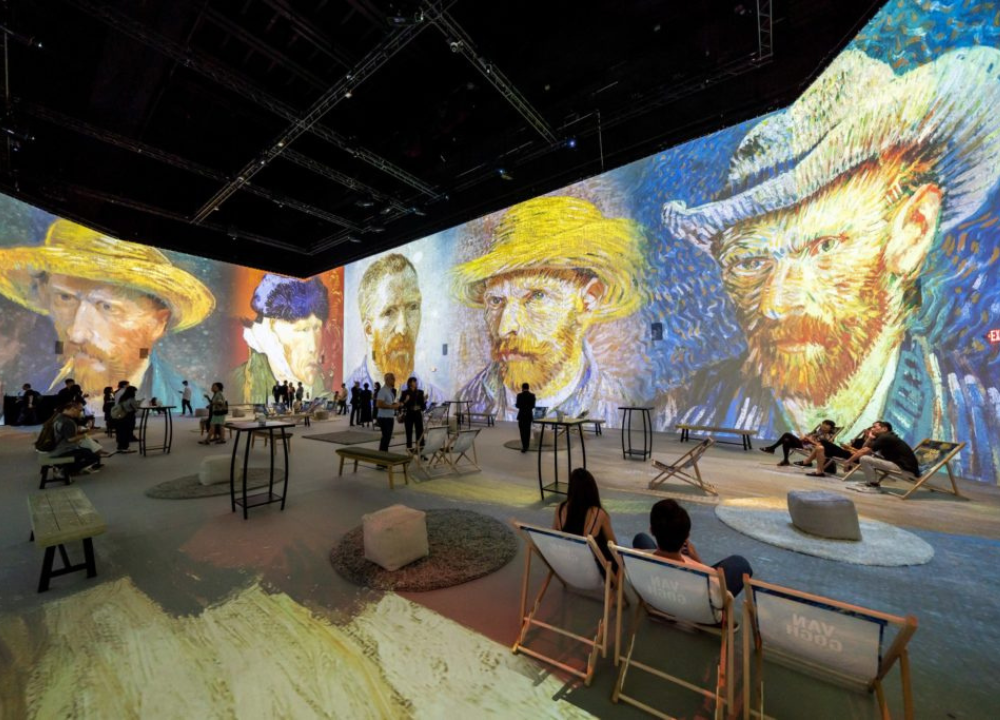“The Creation of Adam” is one of Michelangelo’s most famous works. This masterpiece is part of the Sistine Chapel’s ceiling, painted in the early 1500s.
It shows the moment God gives life to Adam. Michelangelo’s art captures deep emotions and grand ideas. This painting reveals the relationship between God and humanity. The image of God reaching out to Adam is powerful. It symbolizes creation and connection.
Many people admire this artwork for its beauty and meaning. The details in Adam’s body and God’s figure are stunning. Each brushstroke tells a story. In this blog post, we will explore the history, significance, and impact of “The Creation of Adam. ” Join us as we dive into this extraordinary piece of art.
Historical Context
The Creation of Adam is a famous painting by Michelangelo. It forms part of the Sistine Chapel’s ceiling. Understanding its historical context helps grasp its significance. This artwork emerged during a time of great change in Europe. The Renaissance brought new ideas and a focus on human potential. This period shaped art, science, and culture.
Renaissance Era
The Renaissance era lasted from the 14th to the 17th century. It marked a rebirth of interest in classical art and learning. Artists began to explore new techniques and subjects. Michelangelo was one of the leading figures during this time. His work reflected the changing values of society.
Key features of the Renaissance included:
- Focus on realism and human emotion
- Use of perspective to create depth
- Inspiration from ancient Greek and Roman art
- Development of oil painting techniques
Michelangelo’s art showed a deep understanding of the human form. He studied anatomy to create lifelike figures. The Creation of Adam captures a powerful moment. It depicts God giving life to Adam. This image represents the connection between humanity and divinity.
| Key Artists | Notable Works | Impact on Art |
|---|---|---|
| Leonardo da Vinci | The Last Supper | Innovative use of perspective |
| Raphael | The School of Athens | Blend of classical and modern elements |
| Michelangelo | The Creation of Adam | Redefined human figures in art |
Influence Of Humanism
Humanism played a vital role in the Renaissance. It emphasized the value of human beings. This movement shifted focus from religious themes to human experiences. Artists sought to depict the beauty and complexity of life. Michelangelo’s work reflects these humanist ideas.
Key aspects of humanism include:
- Emphasis on individual achievement
- Exploration of human emotions and experiences
- Interest in classical texts and philosophy
The Creation of Adam embodies humanist principles. Adam’s pose shows strength and potential. The figures are not just religious symbols; they are relatable. This connection invites viewers to reflect on their own existence. The painting encourages an appreciation for life and humanity.
Humanism also inspired collaboration among artists, thinkers, and scientists. They exchanged ideas freely, fostering innovation. This spirit of inquiry fueled advancements in various fields. Michelangelo’s art is a testament to this vibrant era.
Michelangelo’s Early Life
The Creation of Adam is a famous painting by Michelangelo. It shows the moment God gives life to Adam. Michelangelo’s early life played a key role in shaping his artistic talents. He started showing his skills at a young age. His experiences and influences helped him become one of the greatest artists in history.
Artistic Beginnings
Michelangelo di Lodovico Buonarroti Simoni was born on March 6, 1475, in Caprese, Italy. His family moved to Florence when he was a baby. Florence was a vibrant city filled with art and culture. It was here that Michelangelo discovered his love for art.
From a young age, Michelangelo was fascinated by sculpture. He often visited gardens with ancient statues. These visits inspired him to create his own works. By age 13, he was an apprentice to a painter named Domenico Ghirlandaio. This experience allowed him to learn different techniques.
Michelangelo’s early works included:
- Reliefs
- Sketches
- Small sculptures
His talent quickly became apparent. He created a small statue of a Madonna at just 15 years old. This early work gained attention in Florence.
Training And Influences
Michelangelo’s training was crucial for his growth as an artist. After his apprenticeship with Ghirlandaio, he studied sculpture in the Medici Gardens. Here, he met other artists and learned from them. He also studied anatomy, which helped him understand the human form better.
Several influences shaped his work:
- The classical sculptures of Ancient Greece and Rome.
- The works of renowned artists like Leonardo da Vinci.
- The teachings of the Medici family, who were great patrons of art.
Michelangelo admired the human body. He believed in capturing its beauty and emotions. His studies allowed him to portray figures realistically. His early experiences laid the foundation for his later masterpieces, including The Creation of Adam.
The Sistine Chapel
The Sistine Chapel is a remarkable masterpiece located in Vatican City. It is famous for its stunning frescoes, especially “The Creation of Adam” by Michelangelo. This artwork captures a pivotal moment in the Book of Genesis. It shows God giving life to Adam. The chapel itself serves as a venue for papal conclaves and important religious ceremonies. Its artistic brilliance and historical significance make it a must-visit for art lovers and tourists alike.
Commissioning The Artwork
The creation of “The Creation of Adam” began in 1508. Pope Julius II commissioned Michelangelo to paint the ceiling of the Sistine Chapel. At first, Michelangelo hesitated. He preferred sculpting over painting. Yet, he accepted the challenge. The project took about four years to complete.
Michelangelo faced many difficulties during the painting process. The ceiling was high and required innovative techniques. He painted while lying on scaffolding, which was physically demanding.
Key points about the commissioning:
- Pope Julius II wanted to restore the chapel’s glory.
- Michelangelo was primarily a sculptor.
- The ceiling was painted between 1508 and 1512.
- It features nine central scenes from Genesis.
The commission changed Michelangelo’s career. It established him as a leading artist of the Renaissance. The success of “The Creation of Adam” brought him international fame.
Architectural Significance
The Sistine Chapel is a prime example of Renaissance architecture. Its design reflects harmony and balance. The chapel measures 134 feet long and 44 feet wide. The ceiling, painted by Michelangelo, adds height and grandeur.
The architecture of the chapel enhances the paintings. Natural light floods the space, highlighting the artwork. The simple yet elegant design allows visitors to focus on the frescoes. Key architectural features include:
- Barrel-vaulted ceiling that creates a sense of openness.
- Large windows that provide natural illumination.
- Aflat ceiling that acts as a canvas for Michelangelo’s masterpieces.
Visitors can appreciate how architecture and art work together. The chapel’s design supports the spiritual experience. It invites contemplation and awe. “The Creation of Adam” draws attention as the centerpiece of this grand space.
Artistic Techniques
The Creation of Adam by Michelangelo is a masterpiece of Renaissance art. This iconic painting shows the moment God gives life to Adam. Michelangelo used various artistic techniques to create this work. Understanding these techniques helps us appreciate the painting more.
Use Of Color
Michelangelo’s use of color in The Creation of Adam is striking. He employed a vibrant palette to convey emotion and depth. The colors enhance the themes of divinity and humanity. Here are some key aspects of his color choices:
- Contrast: Michelangelo used strong contrasts between light and dark.
- Skin Tones: Realistic skin tones make Adam and God appear lifelike.
- Symbolism: Colors carry meaning; blue often represents divinity.
Below is a table that summarizes the main colors used and their significance:
| Color | Significance |
|---|---|
| Blue | Represents heaven and divinity |
| Flesh Tones | Symbolize humanity |
| Green | Symbolizes life and nature |
This careful selection of colors helps to emphasize the connection between God and Adam. The colors create an emotional impact. Viewers feel the tension and energy in the scene.
Fresco Technique
Michelangelo used the fresco technique for The Creation of Adam. This method involves painting on wet plaster. It allows colors to bond with the wall. The result is a durable and vibrant artwork. Here are some important details about this technique:
- Quick Application: Artists must work fast before the plaster dries.
- Layering: Multiple layers of plaster allow for depth and texture.
- Durability: Frescoes can last for centuries if done properly.
Fresco painting requires skill and precision. Michelangelo mastered this technique, evident in the details of Adam’s body. The muscles and contours are lifelike. The colors remain bright and vivid even today.
In summary, the fresco technique enhances the visual experience. It brings the scene to life. The Creation of Adam remains a testament to Michelangelo’s artistic prowess.
Symbolism In The Painting
The Creation of Adam, painted by Michelangelo, is a masterpiece of the Renaissance. This iconic artwork is rich in symbolism. Every detail holds meaning. The painting captures the moment God gives life to Adam. Understanding the symbolism helps us appreciate its depth. It reveals insights into humanity, divinity, and the connection between the two.
Representation Of God
In The Creation of Adam, God is depicted with a powerful presence. He is shown as an elderly man with a strong physique. This representation signifies wisdom and authority. The flowing robes and dynamic pose suggest movement and energy.
Key elements highlight God’s character:
- Facial Expression: God shows determination and care.
- Gesture: His outstretched arm signifies reaching out to humanity.
- Surroundings: God is surrounded by angels, emphasizing His divine nature.
The contrast between God and Adam is striking. God is vibrant and full of life. Adam appears relaxed and passive. This contrast illustrates the difference between the divine and the human condition. It emphasizes the gift of life that God offers to Adam.
Here is a simple table summarizing God’s representation:
| Feature | Symbolism |
|---|---|
| Appearance | Wisdom and strength |
| Gesture | Connection to humanity |
| Angels | Divine presence |
The Touch Of Life
The moment of touch between God and Adam is central in the painting. It symbolizes the divine spark of life. This touch represents the connection between God and humanity. Adam’s outstretched hand shows his desire to receive life.
This moment is full of tension and anticipation. The distance between their fingers creates a powerful visual. It suggests that life is both a gift and a choice. Adam’s relaxed posture contrasts with God’s dynamic reach.
Significant aspects of this moment include:
- Fingers Almost Touching: Represents potential and hope.
- Adam’s Position: Shows vulnerability and readiness to accept life.
- God’s Energy: Reflects the force of creation.
This moment can also be seen as a metaphor for spiritual awakening. The touch symbolizes the relationship between the creator and the created. It captures the essence of human existence—seeking connection and meaning.
Conclusion
Michelangelo’s “The Creation of Adam” is more than just art. It showcases the deep connection between God and humanity. This iconic painting inspires awe and curiosity. People admire its beauty and meaning. Each detail invites viewers to reflect on their own beliefs.
The work remains relevant today, sparking discussions about faith and creativity. Understanding this masterpiece can enrich our appreciation of art. Explore its themes and techniques. Discover how it continues to influence artists and thinkers. Engage with this powerful piece and see its impact on culture.




